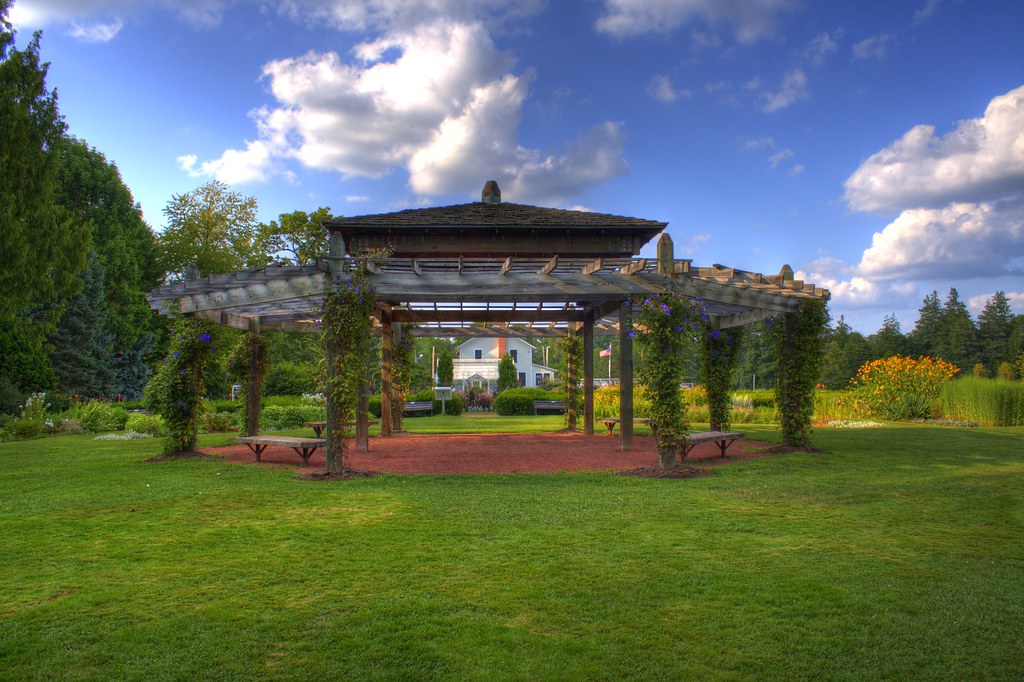But the blown out highlights in the clouds are kind of a problem. It's just that the entire point of HDR is maintain those types of details across a wide dynamic range. That you still have blown out highlights sort of defeats the point of the HDR processing.
Thanks for the input. I got a little carried away with the tone mapping and colors that the clouds didn't really catch my eye. What do you recommend that i do to fix that mistake in the future?
Well, there are a couple ways that this can happen.
Usually, the problem is in the original, bracketed photographs. Let's say, for example, that you are using a +/-2EV bracket. If all three shots lack detail in the clouds, then your HDR will inevitably show blown out highlights.
Sometimes you can correct this problem by dialing in a bit of negative exposure compensation... say -1 EV... and re-shooting the bracket. Even with your middle bracketed shot at -1 EV, your brighter shot will still be one stop overexposed... that may be enough to reveal shadow details while ensuring that the darker shot (at -3 EV) can capture cloud details.
Occasionally, the dynamic range of a scene is too intense to be captured in a four-stop spread (-2 EV through +2 EV). For example, when you're shooting a landscape that includes a direct view of the Sun, there may be too much disparity in the light levels between the searing sunlight and dark foreground details to capture it all with just four stops of range. If your camera allows it, you could widen the bracket range to cover 6 stops (+/- 3EV). My camera maxes out at a +/- 2EV bracket, though... so what I usually will do in this case is run two sets of brackets... one centered around a neutral exposure, and one centered around an exposure with -1 EV compensation. The result, effectively, is a set of six bracketed exposures at -3, -2, -1, 0, 1, 2 covering five stops. In almost all cases, this will be sufficient and you will have captured usable detail in both the darkest areas
and the brightest areas.
The key to making sure you get the bracket right is just to quickly examine your bracketed photos in-camera. Look through the exposures... make sure that at least one under-exposed shot shows cloud details... make sure that at least one over-exposed shot shows detail in the darkest area of the scene. Your goal is to use your multiple shots to capture every bit of detail available in the scene.
Now, the final thing to watch out for (provided that your bracket maintains all the detail required) is making sure that the settings in your HDR application aren't out-of-balance. Most HDR apps allow at least one means of balancing the under-exposed and over-exposed areas of the tone map... the balance will determine how much weight is given to the over-exposed shots relative to the under-exposed shots. If this setting is dialed-in to favor either too strongly, you may lose detail in the darker or brighter areas of the HDR even though your bracketed shots captured it sufficiently.
I hope this helps... I learned largely through my own trial-and-error over the course many, many failed attempts. From the looks of it, you're already a good ways ahead of where I started.




![[No title]](/data/xfmg/thumbnail/38/38727-8e7c94a88000531231f3040ce330aced.jpg?1734172599)
![[No title]](/data/xfmg/thumbnail/38/38728-e8c32361443e4b671d8ef24d4dba6ef8.jpg?1734172599)
![[No title]](/data/xfmg/thumbnail/33/33353-b10d15026a6a614f240c0bd4ee0fe22c.jpg?1734163270)


![[No title]](/data/xfmg/thumbnail/32/32004-4455324f0b4b5cc318dd35877147ac47.jpg?1734160793)





